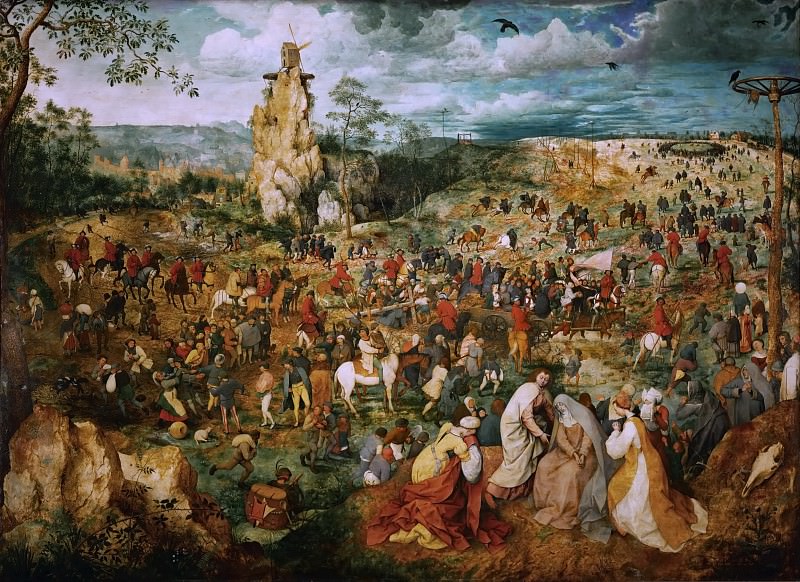Carrying the Cross Pieter Brueghel The Elder (1525-1569)
Pieter Brueghel The Elder – Carrying the Cross
Edit attribution
Download full size: 3570×2597 px (3,2 Mb)
Painter: Pieter Brueghel The Elder
Location: Museum of Art History, Vienna (Kunsthistorisches Museum).
"The Way to Calvary" is one of the most famous paintings of the founder of a dynasty of Dutch painters, Pieter Brueghel the Elder. It belongs to the Brussels period of the artist’s work. The composition of the painting is quite traditional and was used, among others, by contemporaries of Bruegel - for example, Pieter Artsen. The painting depicts a classic biblical subject - the way of Christ to the place of execution.
Description of Peter Brueghel’s painting "The Way to Golgotha"
"The Way to Calvary" is one of the most famous paintings of the founder of a dynasty of Dutch painters, Pieter Brueghel the Elder. It belongs to the Brussels period of the artist’s work. The composition of the painting is quite traditional and was used, among others, by contemporaries of Bruegel - for example, Pieter Artsen.
The painting depicts a classic biblical subject - the way of Christ to the place of execution. This subject was very popular with painters of the time - for example, a painting of a similar subject was painted by the artist’s son, Peter Bruegel the Younger.
In Bruegel’s interpretation, the popular Gospel story is a cluster of many people. Among them are both direct participants in the unfolding action and curious citizens. Such an interpretation is typical of Bruegel’s Brussels period. Christ is depicted in the center of the picture - and at the same time lost among other human figures. Similarly, it is difficult to distinguish the main characters on the painting The Massacre of the Innocents or The Sermon of John the Baptist.
It is believed that in this way the artist was emphasizing the invisibility of an event, even of world significance, in everyday life. The painting contrasts the mocking crowd, numerous and varied, with the inconspicuous figure of one man, Christ, carrying his cross.
In this episode, Bruegel made a conscious departure from the canonical text of the Bible. According to the New Testament, a certain Simon of Cyrene carried the cross part of the way. In Bruegel’s interpretation, the Cyrenean is also present, as inconspicuous as the other characters. The soldiers drive him away from the cross with a pike.
There is also some political component. Bruegel describes the scene as contemporary to him. It is as if the Spanish soldiers who owned Flanders at the time are leading a young Flemish Christ to be crucified.
Кому понравилось
Пожалуйста, подождите
На эту операцию может потребоваться несколько секунд.
Информация появится в новом окне,
если открытие новых окон не запрещено в настройках вашего браузера.
You need to login
Для работы с коллекциями – пожалуйста, войдите в аккаунт (open in new window).




















COMMENTS: 1 Ответы
Питер как всегда лучше всех. Работа совершенная во всех отношениях: эстетически прекрасная, технически превосходная и интеллектуально безошибочная. Прекрасно показано, что религии ничего важного не значат для человечества, которое живет ну совсем другими заботами. И эта чистая правда тем более удивительна, что высказана более 400 лет назад в умной и изящной форме, да так, что и сегодня мало кто догадывается о том что именно это Питер и имел ввиду в своей великолепной картине.
You cannot comment Why?
The painting Carrying the Cross depicts a bustling scene of Christ carrying his cross towards Golgotha. It is a vast landscape panorama filled with numerous figures, horses, and carts, all contributing to a sense of overwhelming activity.
What I see:
Subtexts: